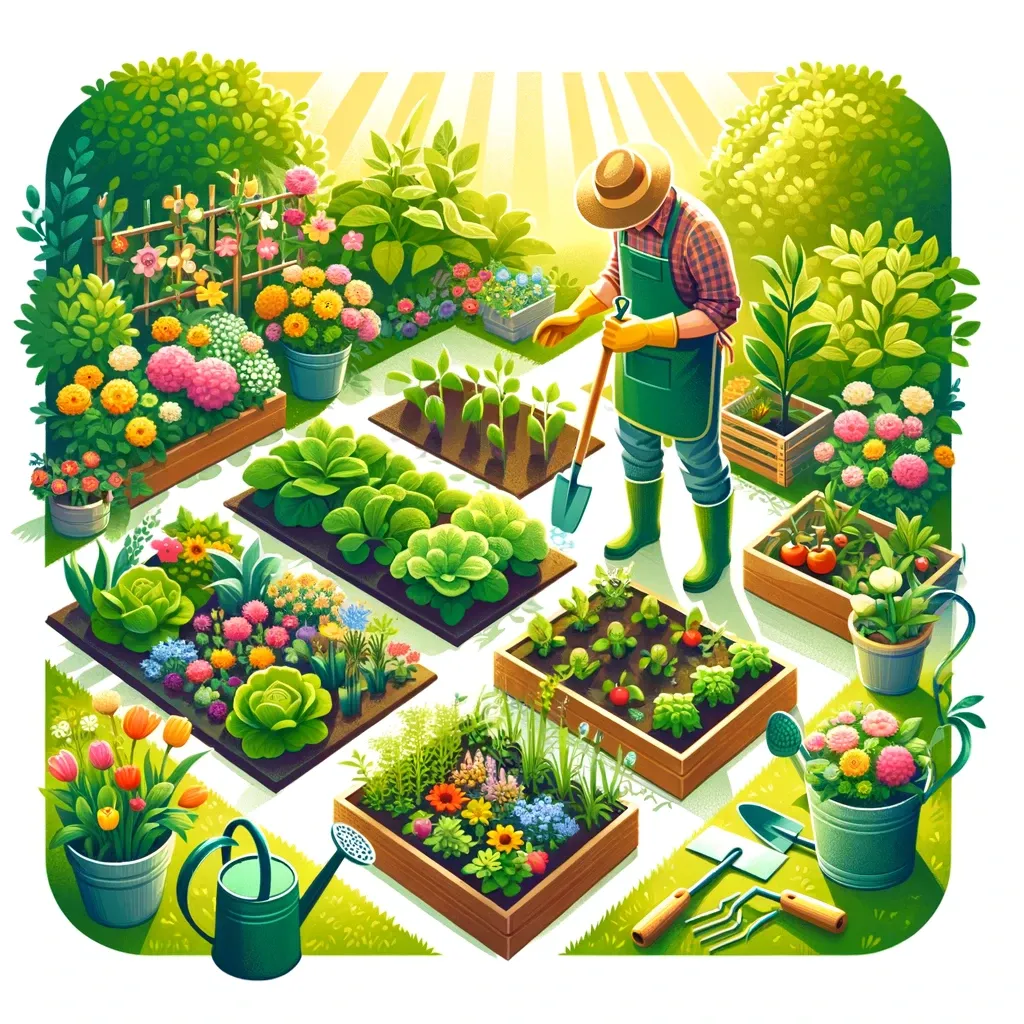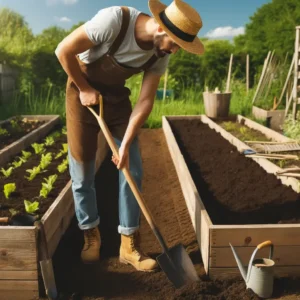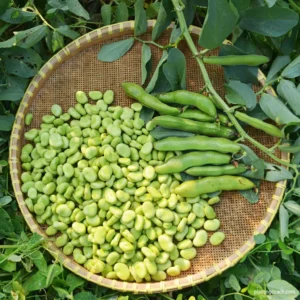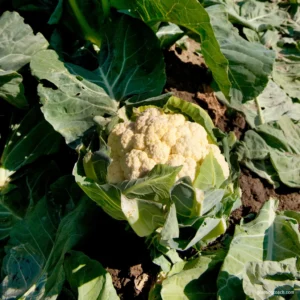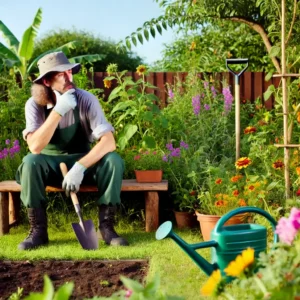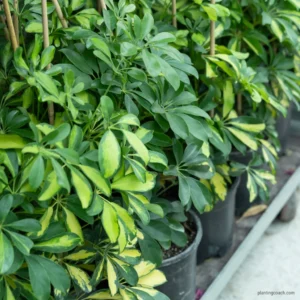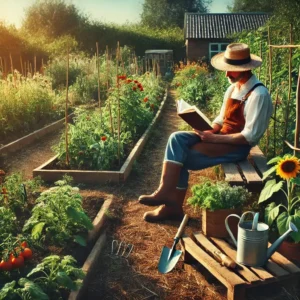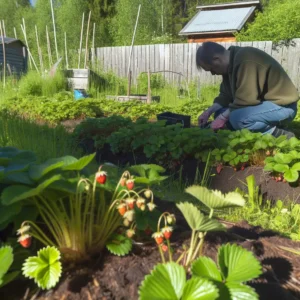Gardening is not just a rewarding hobby; it’s a journey into the world of fresh, homegrown food that can be both nutritious and fulfilling. For beginners, the thought of starting a garden may seem daunting due to the perceived need for extensive knowledge and green fingers. However, specific fruits and vegetables are known for their sustainability and minimal care requirements, making them ideal candidates for those new to this pastime.
This guide is designed to help finding Easiest Fruits and Vegetables to Grow for Beginners. By starting with simple crops, you can enjoy the process of learning without the pressure of managing more delicate varieties. We’ll explore why these particular fruits and vegetables are chosen for beginners and provide practical tips for cultivating a thriving garden from the get-go.
Why Start with the Easiest Fruits and Vegetables to Grow for Beginners?
Starting your gardening adventure with easy-to-grow fruits and vegetables offers numerous benefits. Firstly, these plants typically require less maintenance, which is perfect for beginners who might still need to become familiar with the slight yet important angles of more complex gardening techniques. Starting simple helps build gardening confidence, providing quick wins that motivate and inspire continuous involvement.

Furthermore, easy-to-grow varieties often have a shorter time to harvest, offering a quicker reward for your efforts and reducing the chances of discouragement. Success with these initial crops provides a solid foundation of skills and experiences that can be applied to more challenging gardening ventures in the future.
Top 5 Easiest Vegetables to Grow for Beginners
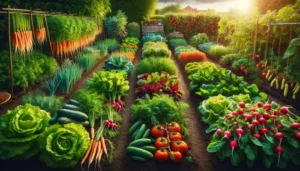
- Carrots: Carrots are a fantastic choice for beginners due to their straightforward growing requirements. They grow well in loose, sandy soil that allows for deep root growth without obstructions. When planting carrots, make sure the soil is well-tilled and free of stones or hard clumps. Water consistently to maintain moist but not waterlogged soil, which is key to fostering smooth, well-formed carrots. Carrots also have the benefit of being able to grow in cooler temperatures, making them an excellent option for early spring or late fall planting.
- Lettuce: One of the quickest vegetables to grow, lettuce can begin to produce edible leaves in as little as 30 days. It prefers cooler temperatures, making it ideal for early spring or late fall gardening. Lettuce requires consistent moisture to keep the leaves tender and sweet, so regular watering is essential. Additionally, planting seeds in intervals of two weeks can provide a continuous harvest throughout the growing season.
- Radishes: Radishes are highly rewarding for first-time gardeners because they grow incredibly fast, with some varieties ready to harvest within three weeks. They need well-drained soil and moderate sunlight, making them suitable for both garden beds and containers. Radishes can be planted multiple times during the growing season for continuous production.
- Cucumbers: Cucumbers are healthy and strong growers that are best planted in warm soil and full sun. They require regular watering, especially when fruits begin to form. For smaller garden spaces, cucumbers can be grown vertically on trellises or fences to save room.
- Tomatoes: Perhaps the most popular garden vegetable, tomatoes are rewarding because they produce abundantly in the right conditions. For beginners, choosing determinate varieties or bush types can simplify care, as they generally require less staking and pruning. Tomatoes progress in full sun and need consistent watering, particularly as the fruits set and mature.
Top 5 Easiest Fruits to Grow for Beginners

- Strawberries: Strawberries are a great starter fruit because they can be grown in garden beds, containers, or even hanging baskets. They require full sun and well-drained soil. Mulching with straw or wood chips can help maintain moisture and protect the fruits from direct soil contact, which reduces rot risks.
- Raspberries: Hardy and productive, raspberries can yield fruit the year after planting. They prefer slightly acidic, well-drained soil and thrive in full to partial sun. Regular pruning helps maintain vigor and increases yield.
- Blueberries: Known for their health benefits, blueberries require acidic soil, which can be prepared in advance using sulfur or planting in specially formulated soil mixes. They also benefit from mulching to keep the roots cool and moist.
- Blackberries: Like raspberries, blackberries are flavorful and can produce plentiful amounts of fruit with basic care. They prefer full sun and rich, well-drained soil. Support with trellises can help manage their vigorous growth.
- Apples: Dwarf apple trees are an excellent choice for beginners with limited space. They can be grown in large containers or small garden plots and require a sunny position and well-drained soil. Regular pruning and appropriate pest management can lead to successful yields.
Essential Tools for the Beginner Gardener
Every gardener needs a set of tools to start their garden effectively. As a beginner, it’s important to equip yourself with the basics, which will make the process smoother and more enjoyable. A spade or digging fork is essential for breaking ground and turning soil, especially when preparing your beds for planting. A sturdy pair of gardening gloves will protect your hands from thorns, insects, and soil-borne pathogens, while a watering can or a garden hose with a spray attachment is crucial for providing gentle, even irrigation to young plants and seedlings.
In addition to these, a good quality hand trowel will help with transplanting plants and flowers with precision, and trimming shears are essential for maintaining plant health and shaping your garden as it grows. A rake is useful for clearing leaves and wastes, and for smoothing soil before planting seeds. If you plan to grow vegetables or fruits like tomatoes that need support, consider investing in stakes or a trellis system early on.
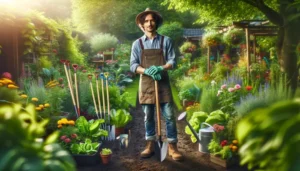
Caring for your tools is just as important as using them. Clean tools after each use to prevent the spread of disease, oil moving parts regularly to keep them functional, and store them in a dry place to prevent rusting. Good tool maintenance not only prolongs their life but also makes gardening easier and more effective. As you become more involved in gardening, you might find specialized tools useful, but starting with these basics will cover most gardening tasks effectively.
Understanding Your Climate and Soil
For beginner gardeners, understanding the local climate and soil conditions is crucial to selecting the right plants and ensuring their flourishment. Your local climate determines not just what you can grow but also when you can plant. Most regions have specific planting windows based on seasonal temperature and weather patterns. Knowing your USDA Hardiness Zone, for example, can help you choose plants suited to your climate’s temperature extremes.
Soil quality significantly affects plant health. Beginners should conduct a soil test early in their gardening plans to understand the nutrient and pH levels of their soil. This test can guide you on what amendments are needed to improve soil fertility and structure. For instance, if your soil is too acidic, adding lime can help balance the pH, making it more suitable for a wider range of plants. Conversely, sulfur can lower the pH if your soil is too alkaline.
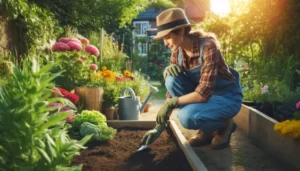
Adding organic matter like compost or well-rotted manure is almost always beneficial. These materials improve soil structure, increase nutrient content, and improve the soil’s moisture-retaining capabilities. Mulching around plants with organic materials such as straw or bark chips can also help maintain soil moisture and temperature, suppress weeds, and slowly add nutrients back into the soil as they decompose.
Planting Your First Garden
Planting your first garden is an exciting journey, but proper planning is crucial to ensure success. Begin by choosing a location that receives adequate sunlight—at least six hours of direct sun per day is ideal for most fruit and vegetable crops. If your space is limited or shaded, consider plants that can thrive with less sunlight, such as leafy greens and some herbs.
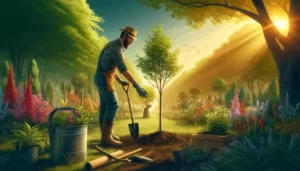
Design your garden layout with both aesthetics and functionality in mind. Raised beds, for example, can provide better drainage and easier access for weeding and harvesting. They also help define your garden space and can be filled with high-quality soil from outside your yard if your native soil is poor. When planning your plant locations, consider both the height and spread of mature plants to avoid overcrowding and ensure each plant receives enough light and air circulation.
Timing your planting is also key. Most plants have optimal temperature ranges for growth and may require starting indoors in colder climates. Use your region’s frost dates to plan when to start seeds indoors and when to move plants outside. This careful scheduling can help maximize your garden’s productivity throughout the growing season.
Maintaining Your Garden
Maintaining a garden involves regular care to ensure your plants are healthy and productive. Watering correctly is one of the most crucial aspects of garden maintenance. Most plants prefer deep, infrequent watering that promotes deep root growth, as opposed to frequent, shallow watering. The best time to water is early in the morning, which helps reduce evaporation and allows the water to reach deep into the soil.
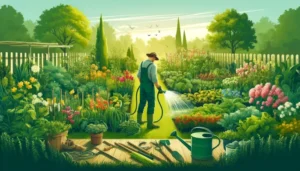
Weeding is another essential task. Weeds compete with your plants for water, nutrients, and light. Regular weeding keeps the competition minimal, which helps your plants grow better. Mulching is an effective way to suppress weeds while also retaining soil moisture and maintaining soil temperature.
Pest and disease management should be proactive. Regularly inspect your plants for signs of distress, such as wilting, spots on leaves, or stunted growth. Many pests and diseases are easier to manage if caught early. Consider integrated pest management (IPM) strategies that include cultural, mechanical, and biological control methods to reduce the need for chemical interventions.
Harvesting and Using Your Produce
Harvesting at the right time is crucial for getting the best quality and flavor from your garden produce. Most fruits and vegetables have specific signs that indicate maturity; for example, tomatoes are best picked when they are uniformly colored and slightly soft to the touch. Similarly, leafy greens should be harvested in the morning when they are most crisp.

Once harvested, your produce can be used in a variety of ways. Fresh vegetables and fruits can be used in cooking, giving you the chance to taste the difference that home-grown quality makes. Excess produce can be preserved through canning, freezing, or drying, which are great ways to enjoy the fruits of your labor throughout the year. Additionally, gardening can become a communal activity by sharing your harvest with neighbors or participating in local food swaps, which enriches your community and spreads the joy of home gardening.
Summary
Starting a garden is a rewarding experience that yields more than just fruits and vegetables; it cultivates patience, perseverance, and a deeper connection to the natural world. For beginners, choosing easy-to-grow plants and equipping oneself with the basic gardening know-how can make all the difference. By understanding your environment, preparing properly, and maintaining your garden with care, you set the stage for a fulfilling gardening journey. Remember, every gardener learns through trial and error, so embrace the learning process and enjoy your gardening adventure.
FAQ
Q1: What is the best time of year to start planting a vegetable garden?
A1: The best time to start depends on your local climate, but generally, early spring after the last frost is ideal for most temperate areas.
Q2: How much watering do my beginner plants need?
A2: Water needs vary, but as a rule of thumb, an inch of water per week either from rainfall or irrigation is sufficient for most plants.
Q3: Are there organic options for pest control that are effective for these plants?
A3: Yes, organic options such as neem oil, insecticidal soaps, and introducing beneficial insects like ladybugs can be effective.
Q4: How can I tell if my soil is suitable for growing fruits and vegetables?
A4: Conducting a soil test can tell you about nutrient levels and pH, which are critical for plant health. Kits are available at most garden centers.
Q5: What should I do if my plants start to look unhealthy?
A5: Check for signs of pests or disease. Adjust watering and make sure they are getting the right amount of sun. Consult a local gardening expert or extension office for specific advice.
